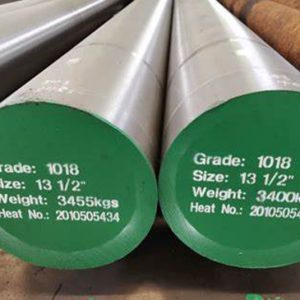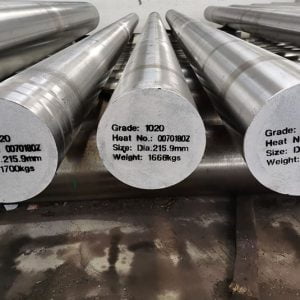Introduction

Carbon steels are a versatile group of materials widely used in various industries due to their excellent mechanical properties and affordability. Among them, 1045 steel stands out for its balance of strength, hardness, and ductility. In this comprehensive guide, we will compare 1045 steel with other carbon steels, exploring their chemical compositions, mechanical properties, heat treatment processes, and applications. This comparison will help you make an informed decision when selecting the right carbon steel for your specific needs.
Chemical Composition of 1045 Carbon Steel
What is 1045 Carbon Steel?
1045 steel, also known as medium carbon steel, contains approximately 0.45% carbon by weight. It is commonly used in applications requiring higher strength and hardness compared to low carbon steels. The chemical composition of 1045 steel typically includes:
- Carbon (C): 0.43 – 0.50%
- Manganese (Mn): 0.60 – 0.90%
- Phosphorus (P): ≤ 0.04%
- Sulfur (S): ≤ 0.05%
Comparing Chemical Compositions
To better understand how 1045 steel compares to other carbon steels, let’s examine the chemical compositions of three common types: 1018, 1020, and 1060 carbon steels.
| Element | 1045 Carbon Steel | 1018 Carbon Steel | 1020 Carbon Steel | 1060 Carbon Steel |
|---|---|---|---|---|
| Carbon (C) | 0.43 – 0.50% | 0.15 – 0.20% | 0.18 – 0.23% | 0.55 – 0.65% |
| Manganese (Mn) | 0.60 – 0.90% | 0.60 – 0.90% | 0.30 – 0.60% | 0.60 – 0.90% |
| Phosphorus (P) | ≤ 0.04% | ≤ 0.04% | ≤ 0.04% | ≤ 0.04% |
| Sulfur (S) | ≤ 0.05% | ≤ 0.05% | ≤ 0.05% | ≤ 0.05% |
As we can see, 1045 steel has a higher carbon content than 1018 and 1020 carbon steels, but lower than 1060 steel. This higher carbon content gives 1045 carbon steel better hardness and strength but also affects its ductility and weldability.
Mechanical Properties of 1045 Carbon Steel
Strength and Hardness
The mechanical properties of 1045 carbon steel make it suitable for applications that require high strength and hardness. Here is a comparison of the mechanical properties of 1045 carbon steel with other carbon steels:
| Property | 1045 Carbon Steel | 1018 Carbon Steel | 1020 Carbon Steel | 1060 Carbon Steel |
|---|---|---|---|---|
| Tensile Strength | 570 – 700 MPa | 440 – 490 MPa | 410 – 490 MPa | 760 – 940 MPa |
| Yield Strength | 300 – 450 MPa | 370 – 400 MPa | 350 – 450 MPa | 470 – 860 MPa |
| Hardness (HB) | 163 – 190 | 126 – 140 | 111 – 150 | 170 – 210 |
Ductility and Toughness
While 1045 steel offers superior strength and hardness, it is also less ductile compared to lower carbon steels. This can be an important factor when choosing materials for applications that require a high degree of forming or machining.
Heat Treatment of 1045 Carbon Steel
Annealing
Annealing 1045 steel involves heating it to around 800-850°C (1472-1562°F) followed by slow cooling. This process helps to improve ductility and reduce hardness, making the steel easier to machine.
Hardening
Hardening 1045 steel requires heating to a temperature range of 820-850°C (1508-1562°F) followed by quenching in water or oil. This treatment increases the hardness and strength of the steel but also reduces its ductility.
Tempering
Tempering is performed after hardening to reduce brittleness and improve toughness. The tempering temperature for 1045 steel ranges from 400-650°C (752-1202°F), depending on the desired properties.
Applications of 1045 Carbon Steel

Common Uses
1045 steel is widely used in various industries due to its excellent combination of strength, hardness, and machinability. Some common applications include:
- Shafts and axles
- Gears and sprockets
- Bolts and studs
- Machine parts and components
Comparing Applications with Other Carbon Steels
When comparing the applications of 1045 carbon steel with other carbon steels, it is evident that each type has its unique advantages:
- 1018 Carbon Steel: Preferred for applications requiring good weldability and moderate strength, such as structural components and shafts.
- 1020 Carbon Steel: Commonly used in automotive parts, machinery, and structural applications due to its balance of strength and ductility.
- 1060 Carbon Steel: Ideal for high-strength applications like springs, blades, and cutting tools due to its higher carbon content and resulting hardness.
Conclusion
In conclusion, 1045 carbon steel offers a balanced combination of strength, hardness, and machinability, making it suitable for a wide range of applications. Compared to other carbon steels like 1018, 1020, and 1060, it provides higher strength and hardness but at the expense of reduced ductility and weldability. By understanding the unique properties and applications of each type of carbon steel, you can make an informed decision when selecting the right material for your specific needs.
FAQ
What is the main difference between 1045 carbon steel and 1018 carbon steel?
The main difference lies in their carbon content: 1045 carbon steel has a higher carbon content (0.43-0.50%) compared to 1018 carbon steel (0.15-0.20%), resulting in greater strength and hardness but lower ductility and weldability.
Can 1045 carbon steel be welded?
Yes, 1045 carbon steel can be welded, but it requires preheating and post-weld heat treatment to avoid cracking and ensure optimal mechanical properties.
What is the typical application of 1045 carbon steel?
1045 carbon steel is commonly used in applications requiring high strength and hardness, such as shafts, gears, and machine parts.
How does the heat treatment process affect 1045 carbon steel?
Heat treatment processes like annealing, hardening, and tempering can significantly alter the mechanical properties of 1045 carbon steel, enhancing its strength, hardness, and toughness to meet specific application requirements.
Why is 1045 carbon steel preferred over 1060 carbon steel in some applications?
While 1060 carbon steel offers higher strength and hardness, 1045 carbon steel provides a better balance of these properties with improved machinability and easier processing, making it more suitable for applications where moderate strength and good machinability are required.





